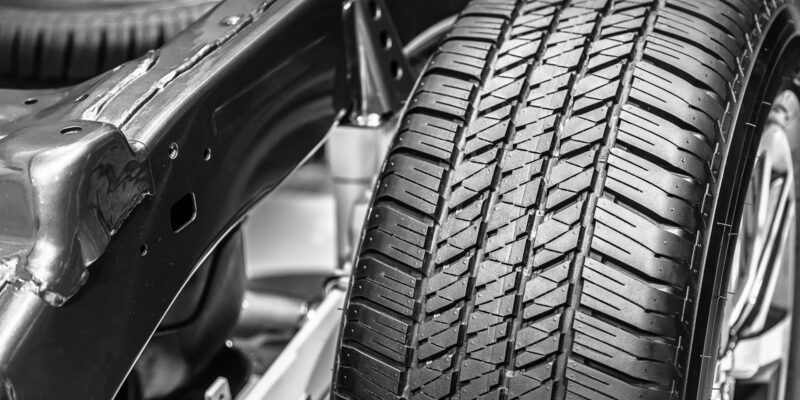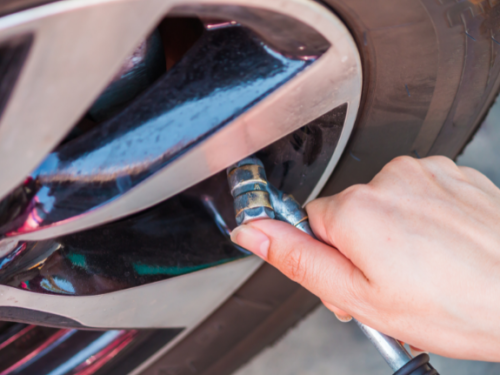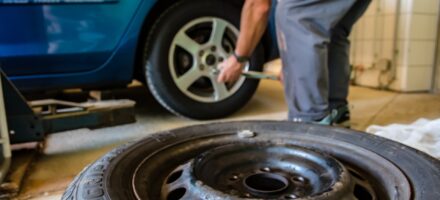
It is a serious offence to drive with a tyre that doesn’t come up to roadworthy standards. You should also make sure that always have a roadworthy spare tyre in your car too. Tyres are constantly in contact with road surfaces and various things that can damage them, such as nails and broken glass, and as they are absolutely vital to your ability to travel in your car it makes sense to have a spare handy. If one of your tyres is Damaged Beyond Repair and you don't have a replacement spare tyre, then you're not going anywhere!
Finding and Identifying Your Spare Tyre
First of all, you should locate your spare tyre to check that it exists and is in a suitable condition should it be needed in an emergency. The replacement tyre will be located somewhere in the car – usually somewhere obvious (like under the carpet on the floor of the boot, or attached to the back of the car in the case of 4x4s). If you can’t find it, or you’re not sure where to look, check your owner's manual and it should direct you to the right place.
‘Run Flat’ or Temporary Use Spares
Some cars will have 'run flat' or temporary use spare tyres. Regulations allow the use of 'run flat' tyres in a semi inflated or flat state, as long as they are identified as run-flats. Temporary spare tyres are also permitted but the vehicle speed must not exceed 50 miles per hour and high-inflation pressure should be used - or the special provisions which allow their use are rescinded and do not apply. You should also be aware that temporary use spare tyres are usually a lot smaller than usual tyres and must have a label attached to the wheel giving colour coded information regarding precautions that should be employed when the tyre is in use.

Changing a Tyre
It’s important to familiarise yourself with the tools you will need before you try to change a tyre: no-one wants to be stood in the dark and rain at the side of a busy motorway wondering which one’s the jack and which one’s the wheel brace.
Make sure you have a wheel brace, a car jack and the spare wheel itself - you'll often find the different tools near to or stored in the spare wheel. If your car has alloy wheels or locking wheel nuts then you'll need an alloy key and/or a locking wheel nut tool to get them off.
You’re driving along and you suddenly feel your car pulling very strongly to one side. What do you do?
- First of all, you need to pull over as safely as possible. Get all your passengers out of the car and ask them to stand/sit a safe distance away from the vehicle.
- Check that the spare tyre is properly inflated and get the tools out of your car.
- Take off the plastic wheel cover if applicable and loosen the nuts on the wheel you want to change. If you have alloy wheels you will need to use your alloy key to remove these too.
- Use the jack to raise the wheel up, using the correct point on the car, nearest to the wheel you are replacing (check your manual again if you're not sure of its location). Don't use the jack near any other point of the car as it may cause problems and damage your vehicle.
- Once the car is raised high enough, put the spare wheel under the body - this will stop the car crashing down in the event of the jack failing. You must never, ever get under a vehicle when a jack is the only thing supporting it as they are prone to slippage and this can be extremely dangerous.
- Keep lifting the car - when the wheel is clear of the road, take the nuts off in diagonal pairs and take them off. Put somewhere safe- you'd be amazed how easy it is to lose one of these essential things.
- Take the wheel off. Be prepared for its weight - and also how dirty it's going to be. Place the removed wheel flat under the car - again in case the jack fails it will give you some extra safety.
- Fit the spare tyre. Make sure it is the right way round and fit the wheel nuts in pairs diagonally and turn until tight.
- Use the jack to lower the car down until it touches the tyre you removed earlier.
- Using the wheel brace, tighten the nuts lightly. Remove the damaged tyre from under your car and then remove the jack once the car reaches the floor.
- Carefully tighten the wheel nuts, stow the damaged tyre and put your tools away and you’re good to go!
Disclaimer: The information in the article is for general purpose information only and should not be constituted as legal advice. This article has been produced by a third party and Jardine Motors does not take any responsibility for the completeness, accuracy, or reliability with respect to the website or the information provided. Article last updated March 2016.


